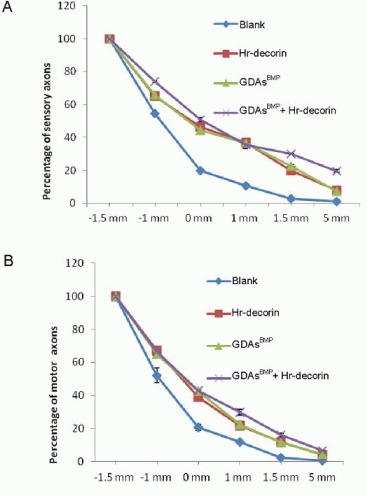Figure 7.

Passing rates of sensory (A) and motor (B) axons at different points (1.5 mm and 1 mm in front of the injury center [–1.5 mm, –1 mm], the injury center and 1 mm, 1.5 mm and 5 mm posterior to the injury center [1.5 mm, 5 mm]) at 28 days after spinal cord contusion in each group.
The passing rates of sensory axons (at 1.5 mm and 5 mm posterior to the injury center) and motor axons (at 1, 1.5, 5 mm posterior to the injury center) in all treatment groups were higher than the blank group (P < 0.05); the passing rates of sensory and motor axons in the combined transplantation group were significantly higher than the other groups (P < 0.05). Data are expressed as mean ± SD of six rats for each group (two-sample t-test and one-way analysis of variance).
Blank: Spinal cord injury group; Hr-decorin: human recombinant decorin injection group; GDAsBMP: glial-restricted precursor-derived astrocytes induced by bone morphogenetic protein-4 transplantation group; GDAsBMP + Hr-decorin: combined GDAsBMP and hr-decorin transplantation group.
